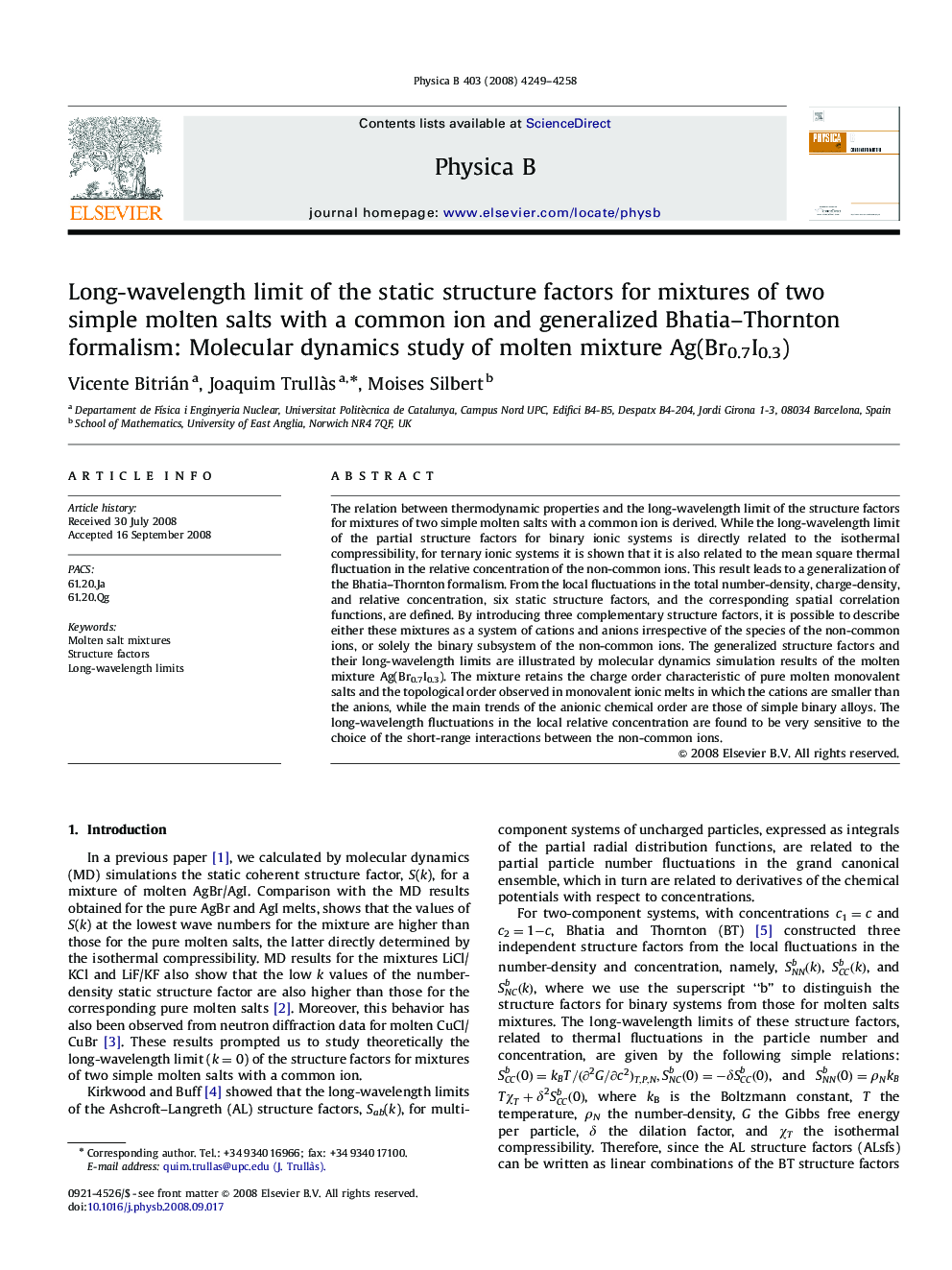| Article ID | Journal | Published Year | Pages | File Type |
|---|---|---|---|---|
| 1812809 | Physica B: Condensed Matter | 2008 | 10 Pages |
Abstract
The relation between thermodynamic properties and the long-wavelength limit of the structure factors for mixtures of two simple molten salts with a common ion is derived. While the long-wavelength limit of the partial structure factors for binary ionic systems is directly related to the isothermal compressibility, for ternary ionic systems it is shown that it is also related to the mean square thermal fluctuation in the relative concentration of the non-common ions. This result leads to a generalization of the Bhatia-Thornton formalism. From the local fluctuations in the total number-density, charge-density, and relative concentration, six static structure factors, and the corresponding spatial correlation functions, are defined. By introducing three complementary structure factors, it is possible to describe either these mixtures as a system of cations and anions irrespective of the species of the non-common ions, or solely the binary subsystem of the non-common ions. The generalized structure factors and their long-wavelength limits are illustrated by molecular dynamics simulation results of the molten mixture Ag(Br0.7I0.3). The mixture retains the charge order characteristic of pure molten monovalent salts and the topological order observed in monovalent ionic melts in which the cations are smaller than the anions, while the main trends of the anionic chemical order are those of simple binary alloys. The long-wavelength fluctuations in the local relative concentration are found to be very sensitive to the choice of the short-range interactions between the non-common ions.
Keywords
Related Topics
Physical Sciences and Engineering
Physics and Astronomy
Condensed Matter Physics
Authors
Vicente Bitrián, Joaquim Trullà s, Moises Silbert,
